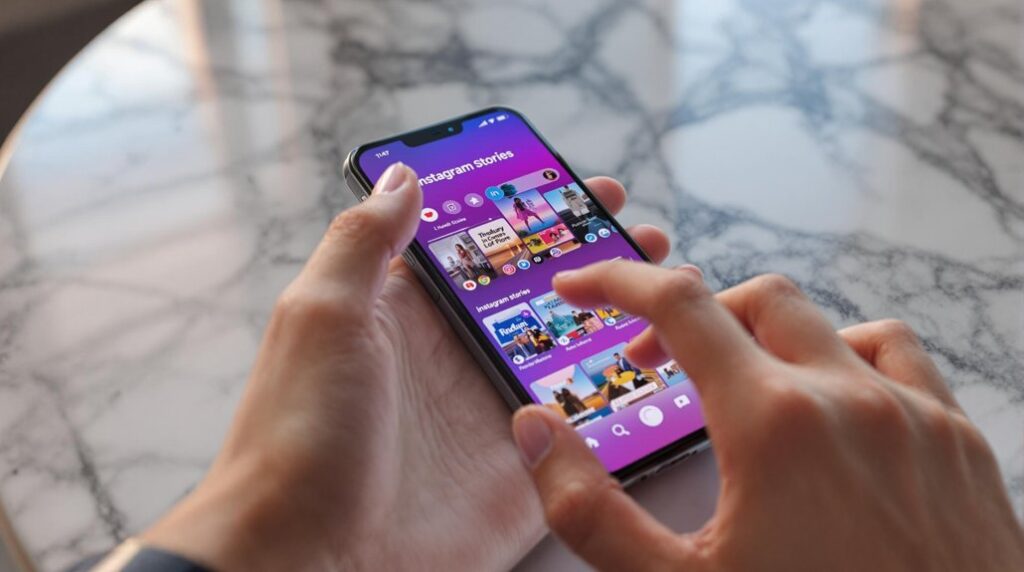Navigating Instagram sponsored post pricing in 2023 requires strategic insights. Start by evaluating follower engagement; high rates boost valuation, with pricing often beginning at $10 per 1,000 followers, rising to 2-5% for engaging content. Clear contract terms defining usage rights and exclusivity guarantee fair compensation. Negotiations should be data-driven, leveraging past performance and audience metrics to justify rates and additional fees for special content. Stay informed on industry standards, recognizing video content typically demands higher rates than static posts. For those seeking a competitive edge, further exploration into these strategies is essential.
Key Takeaways
- Use a baseline of $10 per 1,000 followers to determine initial sponsored post pricing.
- Adjust rates upward for high engagement rates exceeding 5% to maximize earnings.
- Charge more for video content, typically doubling the rate of static posts.
- Include additional fees for exclusivity and unique deliverables in negotiations.
- Regularly update pricing based on industry standards and audience engagement metrics.
Assess Follower Engagement
How effectively are influencers engaging with their followers, and why does it matter for sponsored post pricing? Follower engagement plays a vital role in determining the value of sponsored content on Instagram. A high engagement rate, such as 5% or more, can greatly enhance an influencer’s standing on the impact level scale, justifying higher fees.
By closely analyzing audience demographics and interaction patterns, influencers can refine their content strategies to align with brand objectives, often centered on reaching specific consumer segments.
Moreover, consistent interaction with followers boosts engagement rates and improves the click-through rate (CTR), ideally around 2%, indicating the effectiveness of their audience engagement. This insight is important for influencers seeking to negotiate better deals, as proven performance from past collaborations can be leveraged to demonstrate value to potential sponsors.
The pricing structure typically allows influencers to charge $10 for every 1,000 followers; however, with high engagement, they might charge 2-5% of their follower count for sponsored content.
As a result, understanding and optimizing follower engagement is essential for influencers aiming to charge competitive rates for sponsored Instagram posts while meeting brand expectations efficiently.
Understand Contract Terms
Follower engagement greatly impacts sponsored post pricing. Yet another vital aspect that influences compensation is a thorough understanding of contract terms. Ensuring clarity on contract terms is paramount for influencers and brands alike, as these agreements dictate deliverables, content quantity, and type required by brands.
A robust contract should detail usage rights, distinguishing between organic paid, full, or perpetual usage rights. These stipulations affect how brands can leverage an influencer’s content, potentially incurring additional charges. Consequently, understanding contract terms can considerably impact an influencer’s earnings.
Another vital component is exclusivity agreements, which limit influencers from collaborating with competing brands for a specified period. These clauses should be explicitly defined within contracts, providing room to negotiate modifications for fair compensation due to imposed restrictions.
Such agreements are pivotal in maintaining a transparent and productive relationship between influencers and brands, ultimately influencing the dynamics of brand collaborations.
Negotiate Fair Compensation
Negotiating fair compensation in the domain of Instagram sponsored posts is a critical skill that influencers must master to guarantee they are adequately rewarded for their work.
To effectively negotiate, influencers should initially counter any low offers from brands by presenting a proposal grounded in their metrics, such as follower count and engagement levels. Implementing a pricing strategy starting at $10 per 1,000 followers can serve as a fair benchmark, assuring that influencers charge rates that reflect their true value.
- Leverage Past Success: Highlighting previous successful campaigns, including engagement rates and ROI, can greatly bolster your negotiation position. This data-driven approach showcases your content’s effectiveness and justifies higher rates.
- Integrate Additional Fees: Incorporate charges for unique deliverables like licensing or exclusivity agreements. These elements can greatly enhance compensation and should be transparently communicated during negotiations to assure clarity and professionalism.
- Professionalism Builds Partnerships: Treating your influencer work as a business by clearly articulating your worth and the value you provide can foster better long-term partnerships with brands.
This approach not only secures fair compensation but also strengthens your professional reputation within the industry.
Monitor Industry Standards
Staying informed about industry standards is vital for influencers aiming to set competitive prices for Instagram sponsored posts. By observing current pricing strategies, content creators can charge brands in line with market expectations, such as the common baseline of $10 for every 1,000 followers. This approach helps influencers establish fair and competitive rates, guaranteeing their sponsored Instagram posts align with industry trends.
To refine Instagram sponsored post pricing, influencers should closely monitor competitor pricing strategies. For instance, static posts might start at 1% of the follower count, while video content could command up to double that rate. Understanding the average engagement rates within the industry further informs pricing adjustments. Influencers with higher engagement can justify charging brands more, potentially increasing rates to 2-5% for strong audience interaction.
Additionally, staying updated on influencer marketing trends and algorithm changes is critical. These factors can greatly impact pricing strategies, as popular content formats and seasonal demands influence sponsorship opportunities.
Regularly reviewing audience insights, engagement metrics, and content quality guarantees influencers maintain competitive rates. By leveraging these insights, influencers can effectively capitalize on their unique value propositions, enhancing their position in the influencer marketing landscape.
Frequently Asked Questions
How Much Should I Charge for a Sponsored Post on Instagram?
To determine pricing for a sponsored Instagram post, consider influencer marketing dynamics, audience engagement, niche targeting, and brand partnerships. Factors include post frequency, content quality, follower growth, engagement rate, pricing models, and campaign goals for ideal valuation.
How to Run Effective Sponsored Ads on Instagram?
To run effective sponsored ads on Instagram, prioritize target audience analysis, strategic ad placement, and compelling creative content. Leverage audience insights and engagement metrics to refine ad frequency, enhance visual storytelling, and boost conversion rates, aligning with campaign goals and influencer partnerships.
How Much Do Sponsors Pay You on Instagram?
In influencer marketing, sponsors pay based on sponsor negotiation, audience engagement, and content quality. Factors include niche selection, follower growth, brand alignment, post frequency, engagement metrics, and content authenticity, with rates typically around $10 per 1,000 followers.
How Much to Charge for an Instagram Story Post?
To determine pricing for an Instagram Story post, consider story engagement, audience demographics, niche relevance, influencer tiers, content quality, follower count, brand alignment, posting frequency, analytics tracking, and campaign goals to guarantee strategic, data-driven decisions.
Conclusion
Evaluating follower engagement, comprehending contract terms, negotiating equitable compensation, and monitoring industry standards are essential components in determining appropriate pricing for Instagram sponsored posts. This multifaceted approach guarantees alignment with current market trends and maximizes return on investment for both influencers and brands. By adhering to these guidelines, stakeholders can foster transparent and mutually beneficial partnerships. Such strategic considerations are imperative in maneuvering the dynamic landscape of social media marketing effectively and sustainably.




